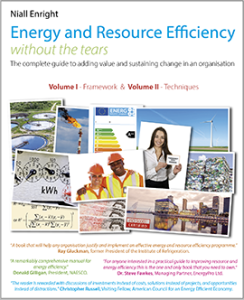 A fiduciary is someone who is entrusted with another person’s money, rights or assets. The word is derived from the Latin fiducia for “trust” and reflects the expectation that the owner has that the custodian will act exclusively with the owner’s interests in mind.
A fiduciary is someone who is entrusted with another person’s money, rights or assets. The word is derived from the Latin fiducia for “trust” and reflects the expectation that the owner has that the custodian will act exclusively with the owner’s interests in mind.
It is a lovely concept. It describes how one person, perhaps vulnerable, in good faith places reliance and trust in another, and how that second person in good conscience, and bearing in mind the trust placed in them, acts in such a way to benefit and support the first person. A fiduciary will not allow their personal interests to interfere with their obligations to the first person, nor will they profit from the relationship.
This model of fiduciary duty has a legal basis in jurisdictions that are based on English Common Law. A company has a fiduciary duty to shareholder, in other words the directors of a corporation are trustees for the stockholders and as such they have an obligation to act in their interests at all times, not to profit without the shareholders’ consent, and to avoid any conflict of interest. Fiduciary duties extend across many types of relationships: that between doctor and patient for example; educator and student; estate agent and seller; trustees and beneficiaries. There is a comprehensive body of law that sets out the expectation of these different relationships, and the remedies and penalties for failing fiduciaries. In many of these fiduciary relationships there is an overriding sense of the stronger, more able, better informed person exercising their power justly and not exploiting their position.
Given the legal requirement to act on shareholders’ interests, it seems strange that the Directors of many companies should use the concept of their fiduciary duty as a common excuse for not addressing issues such as resource efficiency. The Directors argue that their fiduciary duty puts maximising the share price as their central obligation. Disregarding for one minute an obligation to the longer-terms wellbeing of the shareholder through avoided climate change etc., and accepting the narrow share-price focus, one could argue the opposite: failing to assess and implement resource efficiency to drive better share price (via higher profits or greater valuation of assets) is in fact a breach of fiduciary duty.
The company Directors would rightly point out, in their defence, that the shareholders are not strongly articulating a need for better performance on resources (or other social and environmental issues). After all it is up to the shareholder to advise the Board of their priorities, and shareholders consistently send the message that share price is the key priority. But herein lies a second-order effect of fiduciary duty arising from the fact that most shareholder are institutions not individuals. Just as in the case of the company Directors, many of the individuals making investment decisions for these institutions also use narrow interpretations of their own fiduciary duty as an excuse for inaction, stating that their sole objective is to increase the short-term value, or share price, of the assets that they hold in trust for others and thus they fail to signal to the companies they own that they should consider longer-term aspects of value.
There are a number of initiatives that are seeking to break this logjam and, as a minimum, develop the view that considering sustainability is permissible if not yet a requirement. The United Nations Environment Program Finance Initiative (UNEPFI) has set about providing a robust legal examination of fiduciary duty to ensure that proper consideration is taken of environmental, social or governance (ESG) issues. Their comprehensive 90 page study [ UNEPFIFiduciary ] makes for some very interesting reading and one quote from lawyers Arnold and Porter reinforces the view that considering resource efficiency is OK if it relates to share price: ‘…it does not appear that current U.S. law forbids integrating ESG considerations into an asset manager’s decision making process, so long as the focus is always on the value inuring to the beneficiaries and not on achieving unrelated objectives—even if positive collateral benefits result.’ In other words investors or asset manager can consider issues such as resource efficiency only where a link to value can be demonstrated.
It is the historic disconnect between environmental, social or governance (ESG) issues and asset performance, which lies at the heart of the fiduciary duty problem. Company directors have said “since the shareholder doesn’t value this we can’t address this in our business” while institutional investors state “since companies are not demonstrating how this affects share value we cannot invest on this basis”. While both parties accept that ESG issues, including resource efficiency, are material to asset value, their behaviours demonstrate an unwillingness to move first on the topic, in part from a lack of tools to quantify the value (share price) impacts of ESG considerations and also from an innate conservatism.
This fiduciary obligation extends beyond that of senior office holders such as Directors or Trustees. In some jurisdictions, such as Canada, it applies to other employees of companies, while in the investment sector there are also fiduciary obligations on consultants, analysts and advisors. The CFA Institute, home of the Chartered Financial Analysts designation states in its ESG Manual for Investors [ CFAIESG2008 ] that “Successful investing is dependent on one’s ability to discern the factors that influence the market’s valuation of a Company and then judge the accuracy of that valuation. Analysts are generally well versed in using financial metrics to understand those drivers of corporate value and lend skilled interpretation to what is often highly detailed accounting data. In recent years, however, non-financial factors—including environmental, social, and governance factors—have figured ever more prominently in the value of corporations.’ And it goes on to state that: “A Company that incorporates ESG exposures into its long-term strategic planning and adequately communicates these factors and strategies to Investors will provide a more complete picture of that Company’s prospective value. Strategically incorporating ESG analysis may also position Companies to better anticipate future operating environments, including potential costs or burdens to their existing business model.” Current and future resource efficiency (unlike some other environmental, social and governance issues) can easily translate into future cash flows so there is every reason to include this in investment or share price appraisal.
A proper definition of fiduciary duty can become the foundation stone for action on resource efficiency. It is the author’s opinion that we need to get to the default understanding that resource efficiency is material to longer-term asset value (as is the case for most organisations) which means that there is a fiduciary requirement to consider this. In other words we need to go beyond saying that assessing the impact of resource efficiency is merely permissible to a position that this is obligatory, with the consequence that a failure to do so is a breach of fiduciary duty, creating a legal and moral liability for Directors, Trustees and Analysts etc. Having established this principle it is imperative then that fiduciaries all ensure that the assessment of resource efficiency is undertaken by the Company Directors and the materiality properly determined and reported to shareholders.



0 Comments